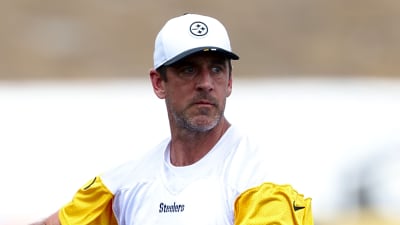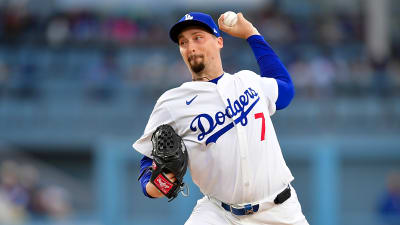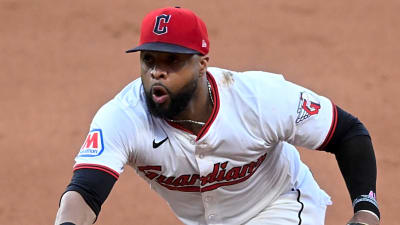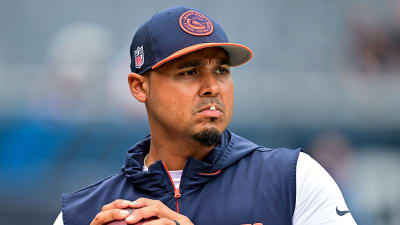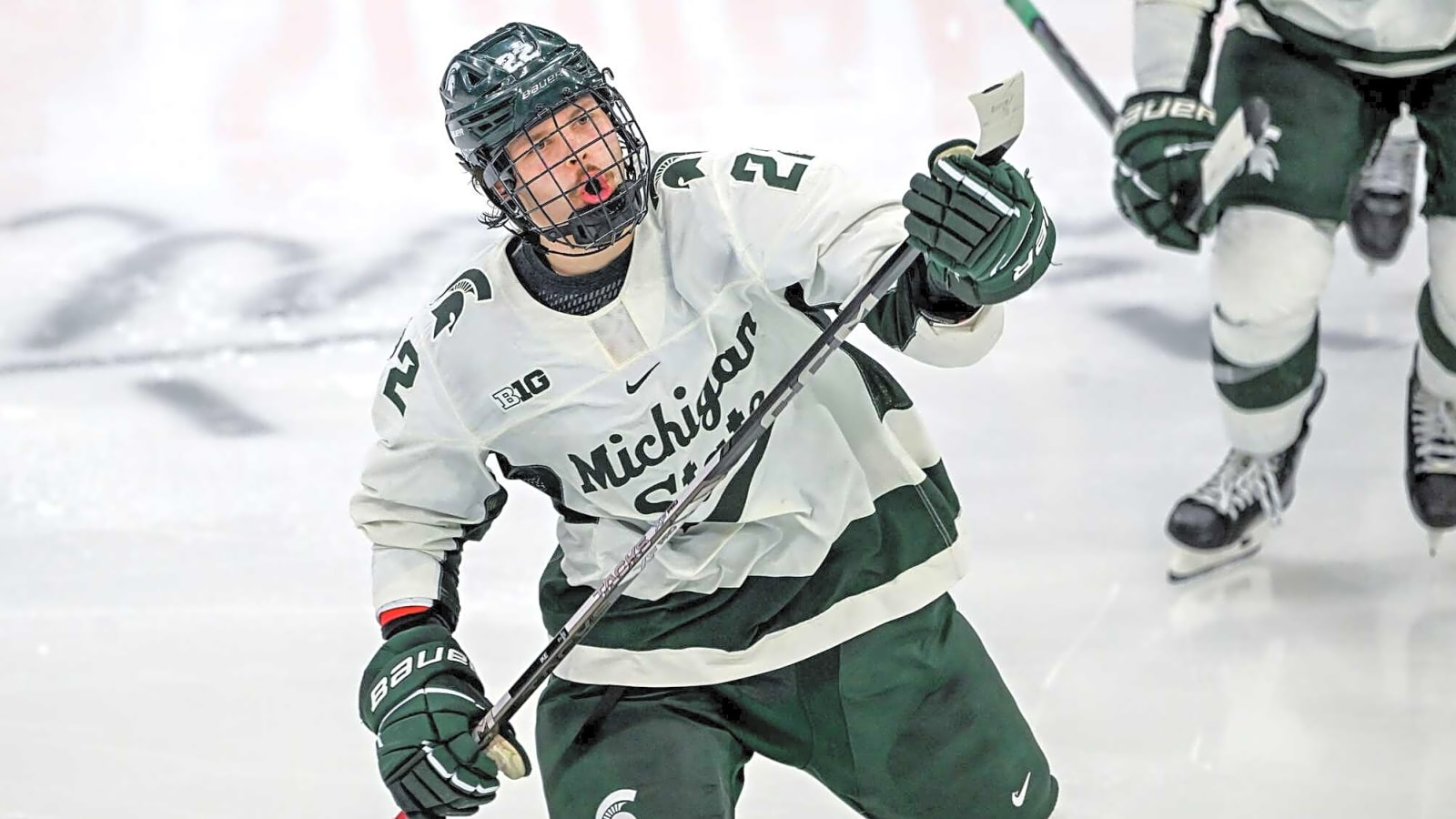
Welcome back to The Oil Rig Edmonton Oilers Prospect Rankings for the 2025 offseason. This time around we are looking at the newest prospect in the Edmonton Oilers prospect pool, in the form of American winger Isaac Howard.
Now this is a unique situation as Howard was accquired after our rankings, but with Sam O’Reilly headed the other way, the writers at the Oil Rig made a collective decision to swap Howard into the rankings, taking O’Reilly’s spot.
| Position | Year Drafted | Highest Ranking | Lowest Ranking | 2024 Ranking |
|---|---|---|---|---|
| LW | 1st Rd, 31st Overall, 2022 (TBL) | N/A | N/A | N/A |
Howard’s development so far
The 2004-born Hudson, Wisconsin product has appeared for all the top end programs in the United States. Howard first started his hockey journey with Shattuck St. Mary playing for their U14-U16 teams.
In the 2020–21 season Howard then made the jump to the US National Development program U17, U18, and USNTDP Juniors teams. The 2004-born prospect even made his debut with the WJC-U18 with team USA During this time the winger also committed to the University of Minnesota-Duluth.
Going into his draft year Howard appeared with the USHL’s USNTDP Juniors, and the U.S National U18 team in the NTDP, and team USA at the WJC-U18. Across all of these outtings Howard impressed. These performances led to a lot of NHL attention.
After putting up a combined 130 points across just 93 games, this garnered mid-first round-early second round projections. Ultimately the high scoring American winger got selected 31st overall by the Tampa Bay Lightning in the 2022 NHL draft.
After an underwhelming 2022–23 season with the University of Minnesota-Duluth, Howard made the decision to transfer to Michigan State.
| Season | Team | League | Games Played | Goals | Assists | Points |
|---|---|---|---|---|---|---|
| 2022-23 | University of Minnesota-Duluth | NCAA | 35 | 6 | 11 | 17 |
| 2023-24 | Michigan State University | NCAA | 36 | 8 | 28 | 36 |
| 2024-25 | Michigan State University | NCAA | 37 | 26 | 26 | 52 |
With the Spartans, Howard unlocked another level to his offensive game, going a point per game in two seasons with Michigan State, even winning the Hobey Baker this past season after posting 52 points across 37 games in 19:00 of TOI.
Howard’s camp chose not to sign with the Tampa Bay Lighting, rumoured to be due to a difference of opinion in terms of his developmental path. This resulted in Howard even feigning going back to Michigan State for the 2025–26 season to wait for his rights expired.
Enter the Edmonton Oilers. After a July 8 one-for-one trade involving former Oilers draftee Sam O’Reilly, Howard now looks primed to make his debut with the Oilers for the 2025–26 season.
Howard’s strengths and weaknesses
Howard is a pure sniper, and his high quality shot alone makes him a threat on every shift. The American wingers game is highlighted by NHL ready shooting, high quality skating, and a capable compete level mixed in with some solid handling.
Strengths
Shooting
Seldom used is the term dynamic, but Howard does have dynamic shooting. This shooting ability is highlighted by a solid shooting posture, clean shot selection, and good fundamentals. Additionally Howard is an incredibly deceptive shooter as well.
From the base, Howard’s shooting is superb as it starts with good balance, a clean downward force/outwards arm extension, and a sneaky-good weight transfer/leg kick that generates high end power. This power alone makes experienced defenders even second guess blocking a shot.
Howard can generate a good quality rush chances where he shows high end shot selection, that pairs with a deceptive release point that could fool most NCAA goaltenders. Especially in set offensive zone plays Howard will likely go for a quick unpredictable shot rather than any meticulously set-up play.
Quality shot placement, and a generally accurate shot. Howard also enjoys a wide range of shot ability, from his backhand, snapshot, and slap-shot the 2004-born prospect shows good capability with all of them.
He is a consistent one-timer threat with this previously mentioned power, and quality hand-eye. This threat is especially realized on the power play where Howard sits on the halfwalls just waiting for a teammate to tee him up. The forward’s timing and positioning can generate consistent high danger chances for.
Howard also shows an element of a clutch factor, and a high rate of finishing, converting on 15% of all of his scoring chances this past season in Michigan State. This also shows why Howard averaged 2:25 of power play time per game.
The one drawback for the American winger is efficiency as he takes eight shots per game which simply wont be possible at the pro-level. There are minor issues around identifying shooting lanes, and seeing through traffic.
These issues are articulated through a 56% accuracy, with many being being blocked rather than going wide.
Howard will be a consistent scoring threat when he’s handed the puck he can certainly find the back of the net.
Skating
Howard’s skating is significantly above average. From his mechanics, to his top speed, and intricacies. His skating should translate nicely to the NHL. Pace is also a huge contributor for Howard’s skating. This area has been an area of growth during his time at Michigan State.
From the base level, Howard has a solid posture, with good ankle, and knee flection. This flection then translates to notable balance, stride stride recovery, and an effective depth of stride.
This foundation allows for rapid acceleration, clean crossovers, and good skating power. This is more evident in his offensive transition play, where he is consistently one of the cleanest and fastest skaters on the ice.
The Spartan forward also implements the occasional change of pace to show his edge-work mastery. Not only is Howard a fast skater, but he’s also quite agile, with the ability to turn on a dime when necessary.
This skating skill is on full display on both the backcheck, and offensive breakout that allow him to effectively control pace and speed of both. In defensive transition this allows Howard to rush back and play an active role in play disruption. On offence this means he initiates breakouts and controls the rush.
During the 2024–25 season Howard started 3.7 breakouts per game.
One thing that does pose issues for Howard’s breakout effectiveness is his lacking lane creation creativity, but Howard possesses all of the other skating tools to overcome this in some manner at the NHL level if he so chooses.
Compete level
Howard shows an above average compete level through his motor, hustle, intensity, and play disruption. These efforts should translate to the next level nicely, while also blending seamlessly with his skating aptitude to make him a threat every shift.
Howard shows a clear motor, and hustle in every single shift. This can be a wide range of objectives from tracking down opponents, thriving on puck retrievals or just hustling to catch up on a rush play. This bodes well both for hints of (specifically) offensive play engagement, and energy to his role.
Howard semi-frequently plays a role on the defensive backcheck, where through his motor, and skating he implements moderate defensive pressure, and play disruption elements that cause problems for opponents as it slows down the effectiveness of their breakouts.
With this hustle, play disruption, and minor defensive pressure Howard can generate some turnovers and puck strips.
In offensive transition the 2004-born product is consistently showing good intensity, and hustle, and rarely falls behind on plays, hinting at good endurance, discipline, and positional responsibility.
This motor is particularly evident as Howard is a high end rush attacker.
Weaknesses
The biggest barrier to Howards game is his senses, as he demonstrates clear limitations in terms of awareness, option identification, and playmaking. Additionally physicality looks to pose some problems for the Hobey Baker award winner.
Senses/puck management
Howard is not a creator, but he is a finisher. The Michigan State forward’s senses are well below average due to limited scanning which produces, poor offensive awareness, risky decisions, and limited pressure awareness. The Hobey Baker winner appears to be quite reactionary in all three zones.
With Howard, the frequency in which he scans the ice shows some limitations in all three zones. In the defensive zone this results in limited risk awareness and passiveness. Most goals against that Howard shows passivity, or ill timed challenges.
This results in higher danger chances against simply because the forward doesn’t engage, show a preventative active stick, or block off any lanes. These elements combine to demonstrate that Howard’s defensive awareness, and instincts in zone play need significant growth.
Howard’s transitional game displays quite predictable angles of attack, and linear route creation as well, always forcing his way to the middle, which could pose a problem, as its will be harder to out-skate pro-level opponents.
Manipulation tendencies are another element that have only moderately improved since his draft year.
In offensive transition, Howard continues these trends of limited offensive awareness as he rarely gauges all of his options, which demonstrates poor poise, some vision limitations, and often translates to poor decision making.
Often these rush decisions form into one of: an outnumbered challenge leading to a shot (low percentage or high), or pass to the first available option. Howard is a play supporter more than a play driver.
Simply put the 5’10” forward doesn’t have the offensive instincts, play reading ability, or patience/poise to be a playmaker at the next level.
The first rounder’s play processing often looks unprepared when he gets the puck in set offensive zone play leading to quick facilitation. This creates limited playmaking as a result of low hockey IQ that he displays through forced plays, blind passes to the slot, and overall limited pressure/lane awareness.
His puck management is overcomplicated, inefficient, and ineffective at points passing or handling into pressure. Howard’s puck management is equal parts basic facilitator and blind passer hoping that someone is wherever he placed it. This helps explain his 81% passing completion rate.
Solid handling and control mechanics when given space. Has a wide range of passing diversity, just lacks significant execution. Off-puck, Howard does show some promise as his positioning and decision making without the puck is significantly better than with it.
Ultimately all these habits have worked at the junior and NCAA level, so expect them to continue for better or for worse at the professional level.
Either way, playmaking isn’t Howard’s game, but scoring and finishing is.
Physicality
Howard attempts to play bigger than he is at points. It’s in moments like those that he displays clear shortcomings in terms of frame, muscle mass, and hit effectiveness.
These limitations are most evident when Howard tries to force new lane creation, engages in board play, or even tries to hit larger opponents. In offensive transition its Howard’s belief that he can create new lanes that often equates to defenders pushing and stripping him of the puck with relative ease.
These forced entries partly explain why he generates six giveaways per game.
Additionally in board play Howard is not an asset. Due to his 5’10’ frame, limited muscle mass, and predictable angling he only wins 43% of board battles, yet he still engages in 14 per game. This hints at the fact that Howard’s aggressiveness might outweigh his poise.
Despite all of this, Howard does show good determiniation, grit, and toughness in slot front battles when he serves as a net-front presence in the offensive zone.
Howard’s next steps
Well it’s not everyday that a top prospect becomes available, and the Oilers capitalized on this. With that being said, Howard does have some real senses and playmaking limitations, but his offensive output mitigates those concerns. Howard’s developmental timeline looks poised to make the NHL.
Ideally a half season in the AHL could do the American forward well in terms of adjusting to the pace and habits of the pro-game. This would also show Howard that some of his college habits, like driving up the middle, or one-one challenges wont particularly fly in the AHL/NHL.
That being said it’s unlikely he gets assigned to the Bakersfield Condors.
Expect Howard to make the Oilers roster for the 2025–26 season. Him alongside Matthew Savoie could be Calder candidates, which is even more unusual for a contending team, but bodes well for the entire organizations future.
As a high scoring forward with a deadly shot, quality skating, and decent enough compete Howard should slot into the Oilers top nine quite nicely, and ideally would compliment one of Leon Draisaitl, or Connor McDavid to get the most out of the young American.
NHL ETA: half a season/NHL ready
Potential: top-six scoring finisher
What do you think about Howard?
More must-reads:
- NHL players who will send their GM a 'thank you' card next summer
- Is a Connor Bedard breakout coming in 2025-26?
- The 'NFL stadium names' quiz
Breaking News
Trending News
Customize Your Newsletter
 +
+
Get the latest news and rumors, customized to your favorite sports and teams. Emailed daily. Always free!


